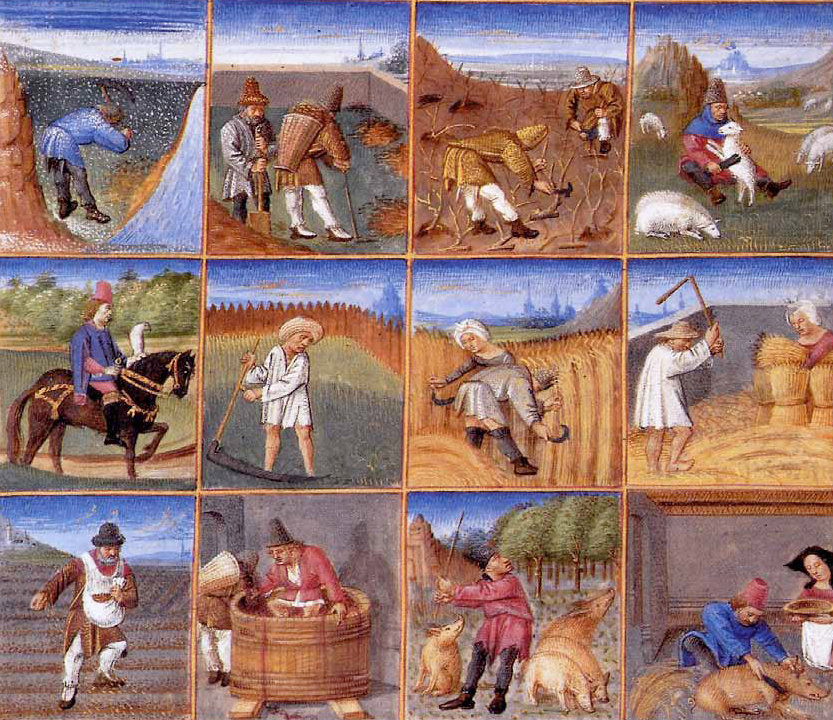
Many illustrations of the Middle Ages depicted peasants at work. One illustration is called the Crescenzi calendar. Each block depicts a type of work or labor that peasants (free or serf) would do throughout the year in terms of crops and harvest. The calendar is located in the work, Liber ruralium commodorum ("book of rural benefits"), written by Pietro de’ Crescenzi around 1304-1309. It was the first printed modern text on agriculture when it was published in Augsburg by Johann Schüssler in 1471. Liber ruralium commodorum was divided in to twelve books about agriculture. It offered advice on many of the things to be done on the medieval farm. The list below describe the content of each book.
- Siting and layout of a manor, villa or farm, considering climate, winds, and water supply; also the duties of the head of the estate
- Botanical properties of plants and horticultural techniques
- Agriculture of cereals and building of a granary
- Vines and winemaking
- Arboriculture—trees useful for food and medicine
- Horticulture—plants useful for food and medicine
- Management of meadows and woodland
- Pleasure gardens
- Animal husbandry and bee keeping
- Hunting and fishing
- General summary
- Monthly calendar of tasks
Sources:



Every now and then I think that being a medieval peasant sounds nice...then I remember you had to actually do work every month like is shown here.
ReplyDeleteEvery now and then I think that being a medieval peasant sounds nice...then I remember you had to actually do work every month like is shown here.
ReplyDelete